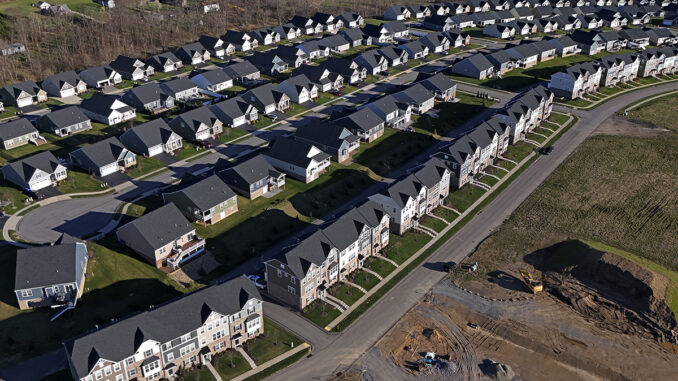
LOS ANGELES — Sales of previously occupied U.S. homes fell in May for the third month as rising mortgage rates and record-high prices discouraged prospective homebuyers during the busiest period of the housing market.
Existing home sales fell 0.7% last month from April to a seasonally adjusted annual rate of 4.11 million, the National Association of Realtors said Friday.
Sales also fell 2.8% compared with May last year. According to FactSet, the latest sales were slightly higher than the 4.07 million pace that economists expected.
“I thought that we would see a recovery this spring — we are not seeing it,” said the NAR’s chief economist, Lawrence Yun.
Despite the pullback, prices climbed for the 11th month compared to a year earlier. The national median sales price rose 5.8% from a year earlier to $419,300, an all-time high on records from 1999. It’s also up 51% from five years ago.
Home prices rose even as sales slowed and the supply of properties hit a four-year high.
“It’s a strange phenomenon,” Yun said. “We had low home sales activity, prices are hitting record highs, and homes look like they’re still getting multiple offers.”
The U.S. housing market has slumped since 2022, when mortgage rates began to climb from pandemic-era lows. Existing home sales sank to a nearly 30-year low last year as the average rate on a 30-year mortgage surged to a 23-year high of 7.79%, according to mortgage buyer Freddie Mac.
The average rate on a 30-year mortgage has mostly hovered around 7% this year. Stronger-than-expected reports on the economy and inflation have forced the Federal Reserve to keep its short-term rate at the highest level in more than 20 years.
Federal Reserve officials said last week that inflation has fallen further toward their target of 2% in recent months and signaled that they expect to cut their benchmark interest rate once this year. The central bank had previously projected as many as three cuts in 2024, which raised expectations in the housing market for mortgage rates to have eased further by now.
“Maybe the Federal Reserve interest rate cut policy, which was projected to happen, but didn’t happen — it’s getting delayed and delayed and delayed —- maybe that’s causing the home sales recovery to be delayed,” Yun said.
The elevated mortgage rates keep many homeowners who bought or refinanced more than two years ago from selling now because they don’t want to give up their fixed-rate mortgages below 3% or 4% — a trend real estate experts call the “lock-in” effect.
According to Realtor.com, as of the end of last year, more than 50% of homes with a mortgage had a rate of 4% or lower, and 87% had a rate of 6% or lower.
NAR said that at the end of last month, there were about 1.3 million unsold homes, an increase of 6.7% from April and up 18.5% from May last year.
That translates to a 3.7-month supply at the current sales pace. In a more balanced market between buyers and sellers, there is a four- to five-month supply.
First-time homebuyers with no home equity to put toward their down payment continue struggling to enter the housing market. They accounted for 31% of all homes sold last month, down from 33% in April but up from 28% in May last year. They’ve accounted for 40% of sales historically.
“Let’s wait to see if this leads to more home sales,” Yun said. “So far, that’s not the case, but at least the inventory is beginning to loosen up.”
